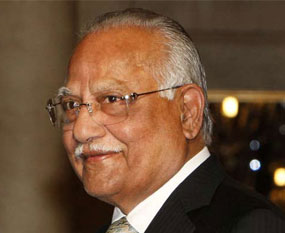 When Dr. Reddy failed to make headway with the government in his first attempt, he decided to wait it out—he waited for the Congress to come back to power. And while he waited, he also started working on laying the foundation of the institution. He went back to the US and sought advice from his colleagues. ‘I went to Thomas Junior hospital in Nashville; I didn’t even have a visiting card. I sent in a note to speak to the one of the key surgeons there. He echoed my sentiments on the state of healthcare in government hospitals. Patients were not getting the care they wanted.
When Dr. Reddy failed to make headway with the government in his first attempt, he decided to wait it out—he waited for the Congress to come back to power. And while he waited, he also started working on laying the foundation of the institution. He went back to the US and sought advice from his colleagues. ‘I went to Thomas Junior hospital in Nashville; I didn’t even have a visiting card. I sent in a note to speak to the one of the key surgeons there. He echoed my sentiments on the state of healthcare in government hospitals. Patients were not getting the care they wanted.
The irony was that in India, there were many who were willing to come forward to lend support to a charitable hospital, but not a private hospital. ‘I had friends, family, patients who would have given Rs 10 crore to start a charitable hospital. Everyone told me I was being a fool to be giving up a lucrative practice and putting so much money in a hospital.’
‘”You have a lovely practice, everyone is coming to you in town. You think you alone can change the entire health structure? You are doing an impossible thing,” they would say.’
Dr. Reddy started out of a room on top of a garage which was his first Apollo office. A change in the Indian administration helped. ‘Venkatraman was the finance minister (R. Venkatraman was the finance minister between 1980-1982; succeeded by Pranab Mukherjee). Venkatraman gave Dr. Reddy hope when he said, ‘As the finance minister, the first signature I put would be on Apollo hospitals to raise money.’
Prime Minister Indira Gandhi had got a glimpse into what Dr. Reddy wanted to bring into India, when she came to Chennai to visit Maruthur Gopalan Ramachandran in the hospital. MGR, as he is popularly known, was the Chief Minister of Tamil Nadu from 1977 to December 1987.
‘Only two of us (Dr. Prathap Reddy and Prime Minister Indira Gandhi) were in the lift. Indira Gandhi believed me and gave me a chance.’
But permissions required and regulations controlling every sector were as stifling as before. First set of permissions was to import medical equipment and second set was to list the company on the bourses. While the Prime Minister had given her nod, the recommendation also had to come from the state government, followed by the director general of health services, and subsequently around twelve different government bodies.
It was exhaustive and tiresome to say the least. For Dr. Reddy that was only part of the battle: ‘Every Thursday I would come back to Delhi and go back on Friday or Saturday. I did this for three to six months continuously.’
Dr. Reddy also needed permission to tap the market for funds. Banks were not allowed to give loans to hospitals. ‘In Bombay they laughed when I said I wanted to list the share.’ But by then Dr. Reddy had acclimatized himself to people laughing at his plans and their disparaging comments. After many, many meetings and knocking on several doors, he met a trader in Bombay who was willing to help in taking Apollo public. ‘I met a dalal in Bombay. He wanted to see my office in Chennai, and I was working out of a one-room office on top of a garage. I brought him home. He wouldn’t even drink water in my house before signing business (business document). He agreed to underwrite the issue.’ Apollo was the first healthcare issue that went public. The first day it was subscribed by 35-36 percent.
Since banks were not allowed to give loans to hospitals, Dr. Reddy had to reinvent the wheel, once again. He went back to the Finance Minister, R. Venkataraman, who directed Dr. Reddy to approach the Industrial Development Bank of India. At the time, IDBI was constituted under the Industrial Development Bank of India Act, 1964, as a Development Financial Institution. It was regarded as a Public Financial Institution and continued to serve as a DFI for nearly 40 years, till 2004.
IDBI said they thought the ‘project was very unique and that they would like to fund it’. ‘Venkataraman was visiting Chennai. He asked me to get there towards the end of his day, at around eight, to sign on the permission document. But in between that time, someone in the department of banking had written on the permission document that funding the project will invite impeachment. So Venkataraman had a blank face and told me, “This can’t be done . . . you meet me in Delhi in a week”.’ During that week, there was a Cabinet shuffle, and Venkataraman was moved to the post of Defence Minister, and the current President of India, Pranab Mukherjee, took charge as Finance Minister. The current Prime Minister Manmohan Singh, was the deputy governor of the Reserve Bank of India at the time. Singh was RBI Governor between 1982 and 1985.
Dr. Reddy was asked to wait for the finance minister’s verdict, ‘Indira Gandhi (Prime Minister) had approved it, he (the banking secretary) said, let’s see what the minister will say.’ The elusive letter of permission came; the finance minister had allowed Apollo to borrow fifty percent from banks and fifty percent from foreign exchange for import of medical equipment.
But it did not end there. Dr. Reddy had to go for credit authorization to the Reserve Bank of India. In the meantime, the Credit Authorization Officer had changed. ‘He said, “Why should I go 360 degrees to give you permission?”‘ The Governor clearly told Dr. Reddy that he couldn’t do much since this was the prerogative of the Credit Authorization Officer.
Dr. Reddy was now reeling under an overwhelming sense of defeat. He was at the airport, heading back to Chennai, feeling demoralized, when he bumped into the then Minister of Civil Aviation, A.P. Sharma, at the airport. ‘Sharma suggested we go to Delhi right away and knock on Pranab Mukherjee’s door. It was a quarter past eleven in the night when we reached Mukherjee’s residence. I told Pranab Mukherjee: “Tomorrow the Deputy Governor is going for two weeks. My whole project will be derailed.” He said to me, it will be done. And asked me to get to the Reserve Bank Building at twelve noon the next day.’
Reddy took the first flight to Mumbai. It was monsoons in Mumbai, rains were pounding with all their fervour and gusto, delaying Dr. Reddy by forty-five minutes. He reached at quarter to one, and looked on as the Credit Authorization Officer signed on the permission document permitting Apollo to raise funds from banks and foreign exchange, and said: ‘You know why I am doing this.’
Finally, Dr. Reddy’s ordeal of cutting through layers of bureaucracy and red tape to get permissions to build a state-of- the-art hospital ended. As a deluge of emotions flooded his mind, he received a call from finance minister, saying: ‘You were not there at 12 pm.’ There were several, several times and moments when Dr. Prathap Reddy was compelled through inefficiencies of the system, criticisms, bureaucracy to give up—from the time when construction of the hospital in Chennai was halted for a year and a half for land approval issues to when a realtor in Bombay offered Dr. Reddy double the money for to sell the hospital property. But Dr. Reddy persevered. For him, Apollo was not just a business. He had found his purpose, and it was that sense of purpose that kept going against all odds. He always saw the big picture, the challenges kept driving his vision to provide people of India with better healthcare.
His journey was about building a dream. ‘I never thought of quitting. This is not the end of the road, because I never followed a path. This is a continuous journey; I don’t know when the journey will end.’



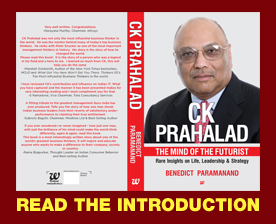

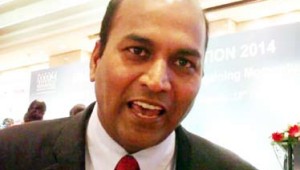
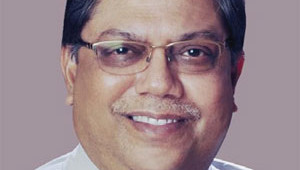

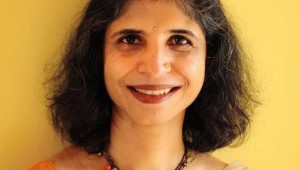


Recent Comments